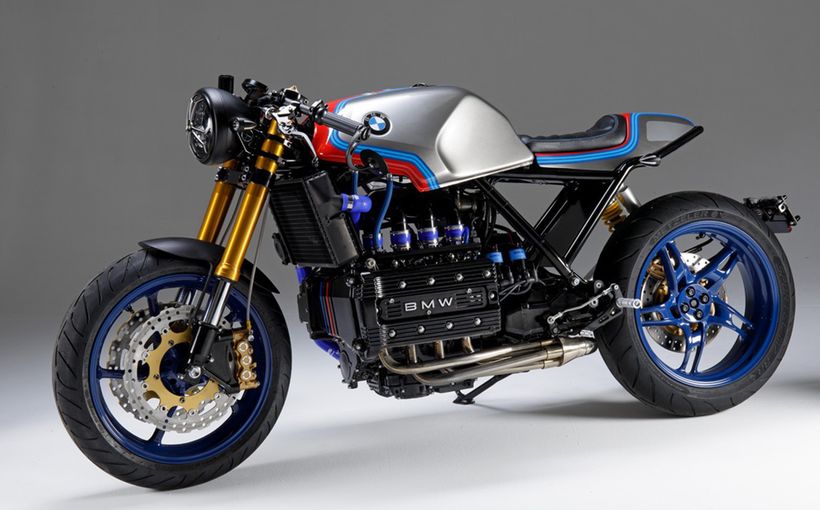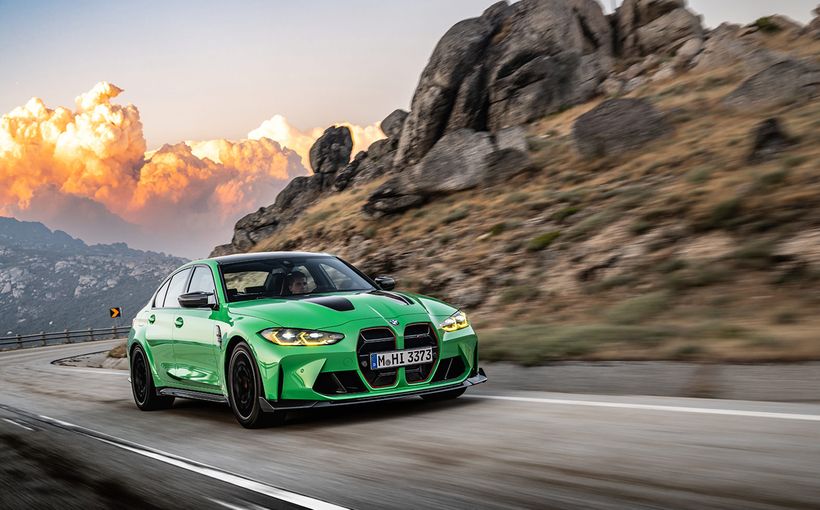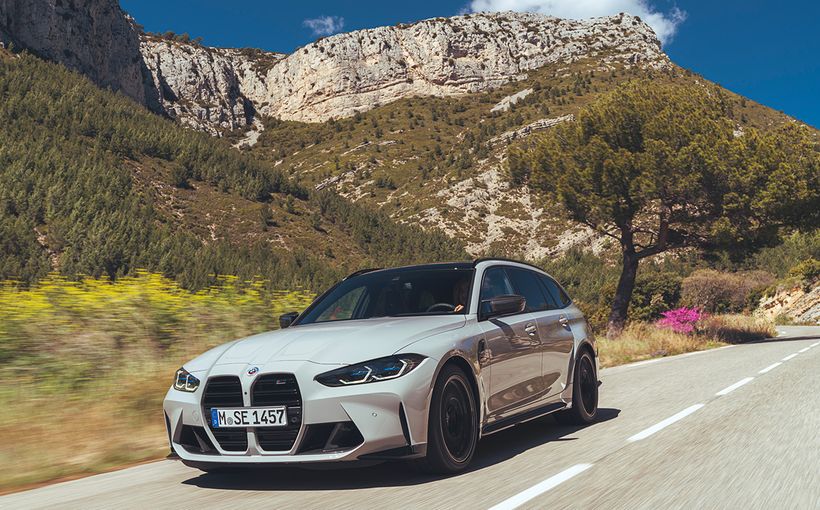
Inside the trumpets, half a dozen butterflies do the twist. Air, drawn irresistibly, rushes by the metal discs. This is how it begins . . . milliseconds later a computer-metered dose of high octane unleaded is added to the inrushing atmosphere. The molecules mix as they tumble past the high-lifted pair of intake valves. These snap shut behind them, leaving no escape from the pressure of the rising piston.
Compressed 1 0.8 to 1, the fuel and air are packed as tight as Tokyo train commuters when a savage spark sets everything afire. The heat is so intense the gas must expand. And so it does, shoving the piston downwards with emphatic force. The straight-line thrust, converted to rotary motion by connecting rod and crankshaft, marches south. Through the hot and dusty region of the clutch, oily caverns of the gearbox, mad whirl of the driveshaft to differential and axles. And, finally, tyres. The Michelins, broad and squat 235/40ZR17 MXX3s, struggle to deliver all of the flame's ferocious punch to the innocent road.
By the time the M3's engine is making its maximum power - at 7000 revs - combustion is occurring 350 times every second. So high is the frequency of the burning event that human senses can only detect a perfectly liquid surge.
And so the daisy yellow coupe with its set of discreet blue, purple and red badges bounds into the distance, grasses bending and leaves fluttering in its wake. Silence rushes in to fill the space cut by the car's harmonic howl.
A cam cover bearing the legend 'M Power' is a promise. With the M3, it's a promise kept. Built around the same M50 block as the current 3 Series sixes, this one's the big daddy of them all, with its capacity of 2990 cm3. The extra comes from 2 mm more piston diameter and nearly 11 mm more crank throw, which gives the M3 power plant a virtually square bore-to-stroke ratio of 86/85.8 mm.

Lightweight pistons are attached to high-strength forged rods by graphite coated gudgeon pins. Oil sprays in the crankcase squirt soothing jets at the undersides of the pogo-ing pistons.
The head, as in the lesser M50 sixes, is crowned with twin camshafts and four valves for each cylinder. Tuned length intake trumpets, their gaping mouths concealed inside a huge plenum chamber, supply the pairs of inlet valves. Each inlet tract has its own butterfly. With their large cross section and close proximity to the inlet valves, these are intended to endow the engine with instantaneous throttle response.
The exhaust system, likewise, is designed to aid the hasty transit of gasses. Cylinders one to three and four to six each feed a set of nearly equal length header pipes. The trip from here to the tailpipe isn't difficult. A pair of monstrous catalytic converters, each containing two high performance metallic-based monoliths, are first to be negotiated. Large volume intermediate and final silencers follow, the latter finished with a pair of serious-sized brushed stainless steel tailpipes.
All of this is straightforward hi-po stuff: getting the engine to flow a lot of air so you can burn a lot of fuel, then making critical components strong enough to withstand the strain of the conflagration. And there's a lot to be stood. At 7000 rpm the M3's powerplant makes 210 kW. That's 286 old-fashioned horsepower. At 95.6 to the litre, the power to capacity ratio is tantalisingly close to the magical – for naturally aspirated four stroke engines, at least -100 hp/litre mark. Torque isn't to be sneezed at either, reaching a maximum of 320 of Isaac Newton's metres.
Reading all of this, you'd have every right to expect the 3.0 litre M Power engine to be a snarling, ill-mannered savage. No such thing.
It idles, hot or cold, without temperament. There's a little rocking on the engine mounts as the occasional stutter takes place. Just like a Holden V6.
At middling engine speeds torque is available in unmistakable abundance and relative silence. Only between about 5500 rpm and the 7280 rpm cut-out does the engine sing a song of kilowatts that's clearly audible in the cabin.
Two civilising influences are at work here. First is the VANOS variable camshaft timing mechanism. This system is capable of varying both inlet and exhaust valve opening and closing events by as much as 21 degrees, relative to the camshaft drive sprockets. The changes are rung by a Bosch Digital Motor Electronics computer, which also initiates the supply of fuel and sparks. It's version M3.3. Like Microsoft with its Windows software, Bosch numbers its engine management systems in sequence. M3.3 is about as high as they run at present.

VANOS and DME smooth the edges off what is otherwise one mighty mean M engine. They endow it with a sweet idle, bags of mid-range punch and the soaring top end. The BMW engineers also claim low emissions and fuel economy as benefits of the precise control.
The torque curve shows how well the M Power men know their work. It's a relatively gentle curve across its entire breadth. There are no spikes or troughs, the usual evidence of powerplant cantankerousness. Between 3600 rpm and 5900 rpm it's flat as a biscuit. The resultant power curve is a beautifully smooth ascent to the peak; a guarantee of linear throttle response if ever there was one. And that's just how it drives.
Ignore BMW's 6.0 second 0-100 km/h and 14.3 second 400 metre claims, reasonable though they seem. Even without such basic performance credentials, this engine still would demand to be driven with verve.
The not-too-heavy clutch, the same size as that in the even more powerful M5, and the 5 Series derived five-speed gearbox don't obstruct vigorous use of everything the engine has to give. And the pedals are arranged just so for heel and toe.
The brakes are every bit the equal of the engine. Massive ventilated discs clamped by equally sizeable single piston calipers shed speed even more quickly than the engine packs it on. There's ABS, but even quite desperately hard braking fails to invoke the familiar chattering through the pedal, so firmly do the Michelins grip the bitumen.
As with the brakes, the M3's suspension has added fibre. Firmer springs and dampers endow it with a ride height 31 mm lower than the standard coupe - despite the M3's 17 inch 1 0 spoke BMW Motorsport wheels.
Elsewhere throughout the suspension crucial components - stub axles, spring plates, bushings, anti -roll bars - are stiffened or strengthened. There are also slight changes to the geometry of front and rear suspensions, intended to .take the utmost advantage of the Michelins' big, sticky footprint. Drive the M3 with caution and it's perfectly neutral, with neither front nor rear tyres slipping. Drive it with spirit and the accommodating character of the chassis shines. The suspension engineers set out to dial in gentle on-the-limit understeer. And that's what is to be found when turning in at slightly ambitious speeds with trailing or neutral throttle. The message is clear and unambiguous.

But call upon that glorious engine mid-comer and it has the muscle to deliver modifications of cornering attitude. It can kill understeer stone dead or, if you prefer, give extrovert oversteer on demand in the lower gears. So accurately does the engine respond to micron-fine throttle adjustments that its magnitude is purely a matter of personal choice: make the rear tyres nibble at the limit of their grip, or take a big crossed-arm bite out of it.
Ride quality is unexpectedly supple. The M3 weighs 130 kg more than a 325i coupe, but the fine control of the suspension comes as a surprise nonetheless.
Only the M3's rack and pinion steering with variable ratio - the other 3 Series coupes lack the latter- feels slightly bland relative to the other controls. Bland too is the way the M3 looks. It isn't a car that brags to the traffic that it's a sensible latter day supercar.
Cosmetics are subtle. There's a deeper front bib matched by a longer rear apron, and M3-only side sills. The external rear view mirrors are the same as those on BMW's track cars. Small tricolour badges on flanks and rump modestly proclaim the identity of its creators.
Inside, the cabin is immediately familiar too. Apart from the more deeply bolstered front seats and engine oil temperature gauge in the bottom segment of the tachometer dial , all is 3 Series coupe.
Such anonymity shouldn't deter those who simply want to appreciate what the M3 offers. For those who appreciate being seen in a car of the M3's calibre… well, its appearance may fail to fulfil their extrovert aspirations.
The first shipment of the M3 won't roll off the boat until early in 1994, but there are already 25 definite takers at the relatively reasonable price of $115,000.
They are all, every one of them, certain to discover the joy of the butterflies that dance in trumpets. Fortunate bastards.

Go Back in time with the Wheel Archive. Get FREE access to 5 years of Wheels archive content now!  Protect your Classic. Call Shannons Insurance on 13 46 46 to get a quote today.
Protect your Classic. Call Shannons Insurance on 13 46 46 to get a quote today.









